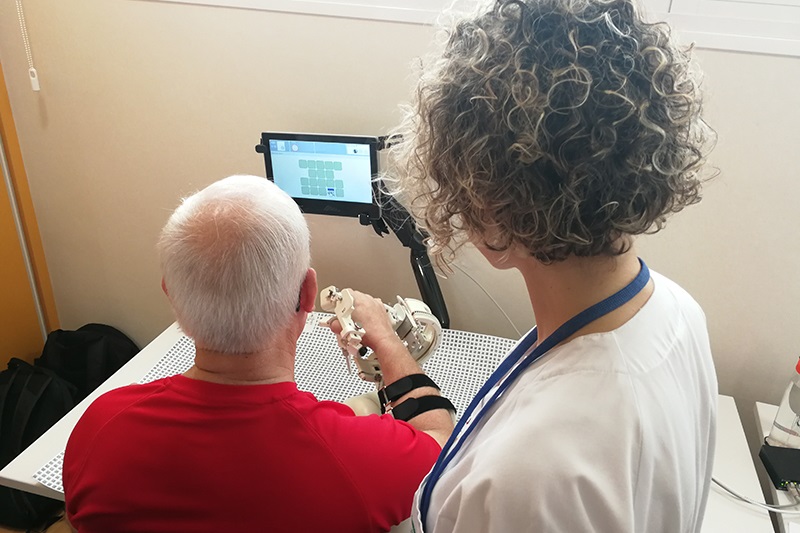EIT Health provides solutions for stroke patients

For 29 October 2019, World Stroke Day, we paid attention to a medical condition that affects 14.5 million people every year and is the leading cause of death in women and the second leading cause of death in men.
The main challenge that stroke survivors face is restoring their quality of life and gaining mobility. In these cases, technology can be a powerful ally, as can be seen from EIT Health Innovation Projects.
Some EIT Health projects facilitate stroke rehabilitation from home and reduce patient transfers to hospitals or therapy centres while ensuring clinical effectiveness of the exercises thanks to the combination of video games and virtual reality. Three examples are:
RGS@HOME
RGS@HOME means Rehabilitation Gaming System at home. The system uses virtual reality to assist patients with motor and cognitive recovery after a stroke.
This project is the result of more than 15 years of research in brain theory and the adaptation of ICT techniques to neurorehabilitation. The total investment executed to this point surpasses EUR 10 million. The EIT Health framework and funding allowed a partnership gathering the whole spectrum of public and industrial stakeholders from three European regions with both public and mixed private/public reimbursement models (Sweden, France and Spain).
MERLIN
MERLIN uses a robotic assistant, software games and a remote connection to a therapist to allow post-stroke patients with upper-limb impairment to undergo physical rehabilitation at home.
With this system, disabled patients can improve their upper-limb mobility and reduce by 50% their visits to the doctor or therapist. It also showed a 10-20% increase in the effectiveness of treatment thanks to the direct communication with the therapist and to the ability of patients to manage their own health.
Beyond patients, beneficiaries will include payers. It is estimated that MERLIN could reduce the cost of treatment to the public health systems by more than 25%.
This project is an example of collaboration with partners accross European borders, including experts in innovation at Tecnalia, in medical rehabilitation at the Andalusian Health System (SAS) and Juha Hijmans and Corry van der Sluis, both from University Medical Centre Groningen, in technology and business at GMV, and in medical devices manufacturing at PROXIMA d.o.o.
Vigo
Vigo is developing a stroke rehabilitation mobile application that uses artificial intelligence to help stroke survivors and their families – based on years of research in stroke treatment, psychotherapy and neuroscience.
Because stroke survivors can use the app in their own home, they are able to start therapy sooner and keep at it for longer, and these are two factors in helping to make post-stroke therapy more effective.
Collaboration is key to succeed
Collaboration among different organisations and companies is a major part of EIT Health's contribution. EIT Health allowed integration and validation of the system in home settings, first in a usability test in Spain and then in a study of effectiveness in the Netherlands. EIT Health also supported advances in the CE marking procedure of the system and development of a business model and market strategy – to ensure success in the market.
From innovation to market: Providing new solutions for stroke patients
EIT Health has a business creation programme - Accelerator, which is set up to support the best and brightest health industry entrepreneurs.
Among the start-ups that have been supported by EIT Health, there are several start-ups providing new solutions for stroke diagnostics, treatment and rehabilitation, such as Anaconda Biomed, Apta Targets, Eodyne Systems, FreeOx Biotech, Methinks Software or Virtual Body Works.


 Share this page
Share this page


